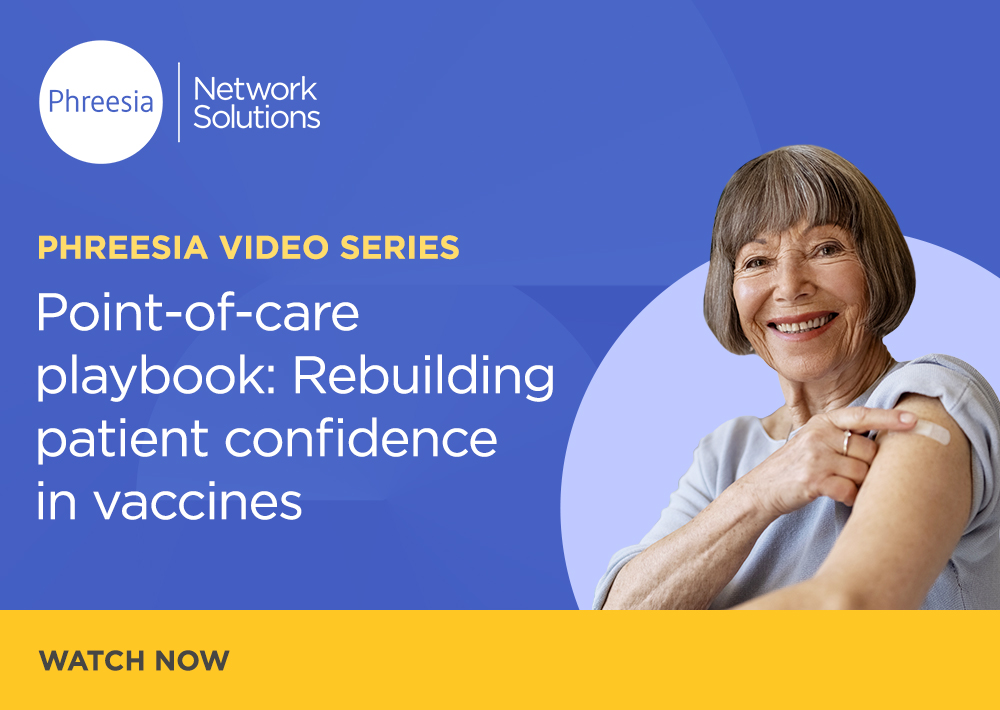
Women with endometriosis and PCOS deserve to be heard. They deserve timely diagnoses, compassionate care and clear information.
Approximately 6.5 million women aged 15–44 in the United States live with endometriosis. Another 1 in 10 women of reproductive age are affected by polycystic ovary syndrome (PCOS), and up to 70% of women with PCOS may not even realize they have the condition. These numbers are staggering, but they only scratch the surface of a deeper issue: Too many women are navigating these conditions without a diagnosis, without support and without feeling heard.
Endometriosis and PCOS are complex, chronic problems that go far beyond “just period problems.” They can impact fertility, metabolism, mental health and overall quality of life. Yet, despite their prevalence, these conditions are often misunderstood, underdiagnosed or misdiagnosed, leaving women to manage symptoms that feel confusing, isolating and overwhelming.
More than just period pain
Let’s be clear: Endometriosis and PCOS are not just about cramps or irregular menstrual cycles. They can cause hormonal imbalances, unwanted hair growth, hair thinning, pelvic pain, prolonged bleeding, mood swings, anxiety, depression, weight gain and more. These symptoms often feel unconnected, like the body is sending mixed signals, and because general awareness is low, many women don’t realize their symptoms could be part of a larger health issue.
The lack of awareness is widespread. In a Phreesia survey of more than 2,400 women who had not been diagnosed with endometriosis or PCOS, fewer than 1 in 5 were familiar with either condition. Yet nearly half of these women said their period-related symptoms had a moderate to significant impact on their everyday life, and 40% rated their pain or discomfort between 7 and 10 on a 10-point scale. These findings highlight a critical gap: Many women don’t recognize their symptoms as part of a larger health issue, and as a result, they may not know how—or even that they should—bring them up with their doctor. That missed connection can delay diagnosis, treatment and the support they need to manage their health.
But receiving a diagnosis is just the first step, and while it can bring relief and validation, it often marks the start of a new set of challenges. Phreesia’s research shows that many diagnosed women report that they still don’t feel like they truly understand their condition—what causes their symptoms, how their health may change over time or what management strategies are effective. This uncertainty can impact their daily experience, making it hard to manage their symptoms, make informed decisions and advocate for themselves in healthcare settings.
This gap between diagnosis and understanding is more than a knowledge issue, it’s a daily reality. It affects how women experience their condition, interact with healthcare providers and manage their wellbeing. Addressing this gap is essential for empowering women to take charge of their health and improve their quality of life.
The point of care: A moment that matters
For many women, the journey to diagnosis is long and frustrating. In a survey of more than 1,400 women aged 18–44 who were diagnosed with PCOS or endometriosis, more than half (53%) experienced symptoms for over two years before receiving a diagnosis.
That’s two years of pain, confusion and feeling dismissed.
But there’s hope. The point of care—the moment when women interact with their healthcare providers—can be a powerful catalyst for change. With the right strategies, life sciences organizations and advocacy partners can transform these moments into opportunities for education, validation and empowerment.
Messaging that builds trust
When brands show up with empathy and educational content, they build trust. This messaging can validate women’s experiences, normalize conversations and empower action. Done right, point-of-care messaging doesn’t just inform, it resonates and drives action that could help improve health outcomes.
According to a Phreesia survey of women diagnosed with PCOS, endometriosis and other period-related conditions:
- 52% said information on common symptoms would have helped them reach a diagnosis sooner
- 42% wanted to know more about signs and risks
- 63% found information about treatments and symptom management helpful
- 52% valued insights into how conditions affect other aspects of health, like fertility
- 49% appreciated information about related symptoms
These numbers tell a clear story: Informed patients are empowered patients, and empowered patients drive better outcomes.
The role of life sciences and advocacy partners
Life sciences organizations and advocacy partners have a unique opportunity to lead the charge. By investing in point-of-care strategies that prioritize empathy and education, they can help women feel seen, heard and supported.
This isn’t just good marketing, it’s good medicine.
To truly make an impact, these efforts must be personalized and tangible. Educational materials that reflect the lived experiences of women with PCOS and endometriosis—such as symptom checklists, visual guides and patient stories—can help women recognize patterns and feel less alone. Conversation guides designed to foster open, validating dialogue with providers can equip women to ask the right questions and advocate for their health more confidently. Campaigns that destigmatize menstrual health and normalize conversations in waiting rooms, exam rooms and digital platforms can prompt women to speak up and seek answers.
Turn empathy into impact
Women with endometriosis and PCOS deserve to be heard. They deserve timely diagnoses, compassionate care and clear information. Life sciences brands can help make that happen by showing up at the point of care with empathy, education and actionable support.
Whether it’s developing tailored resources, amplifying patient voices or equipping patients with tools for better conversations with their providers, every effort counts. Learn how you can leverage the point of care to close the gap between symptoms and solutions and ensure that no woman feels unheard in her healthcare journey.


